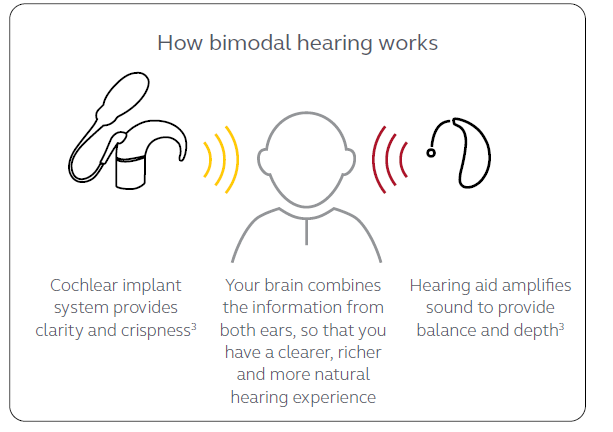Bimodal Hearing
Although many people start by wearing two hearing aids, as hearing loss progresses, they find that they need something more to help them hear better in both ears. For many, a cochlear implant in one ear and a hearing aid in the other can provide a richer, more natural hearing experience.1 This type of hearing is referred to as bimodal hearing. All cochlear implants work with any type of hearing aid to experience the benefits of bimodal hearing.

Source: Cochlear Americas
Benefits of bimodal hearing
- Large leap in hearing performance between hearing with two hearing aids vs. hearing with one hearing aid and one cochlear implant – 47 percentage points1
- Greater clarity and improved speech understanding, especially in noise1
- Better determination of where sounds are coming from2
- Better sound quality and improved satisfaction when listening to music1
To get more information about cochlear implants, contact your hearing healthcare professional or visit Cochlear.com and the American Cochlear Implant Alliance.
References:
-
Gifford RH, Dorman MF, McKarns SA, Spahr AJ. Combined electric and contralateral acoustic hearing: Word and sentence recognition with bimodal hearing. Journal of Speech, Language, and Hearing Research. 2007 Aug 1; 50(4):835-43.
-
Potts LG, Skinner MW, Litovsky RA, Strube MJ, Kuk F. Recognition and localization of speech by adult cochlear implant recipients wearing a digital hearing aid in the nonimplanted ear (bimodal hearing). Journal of the American Academy of Audiology. 2009 Jun 1;20(6):353-73.
